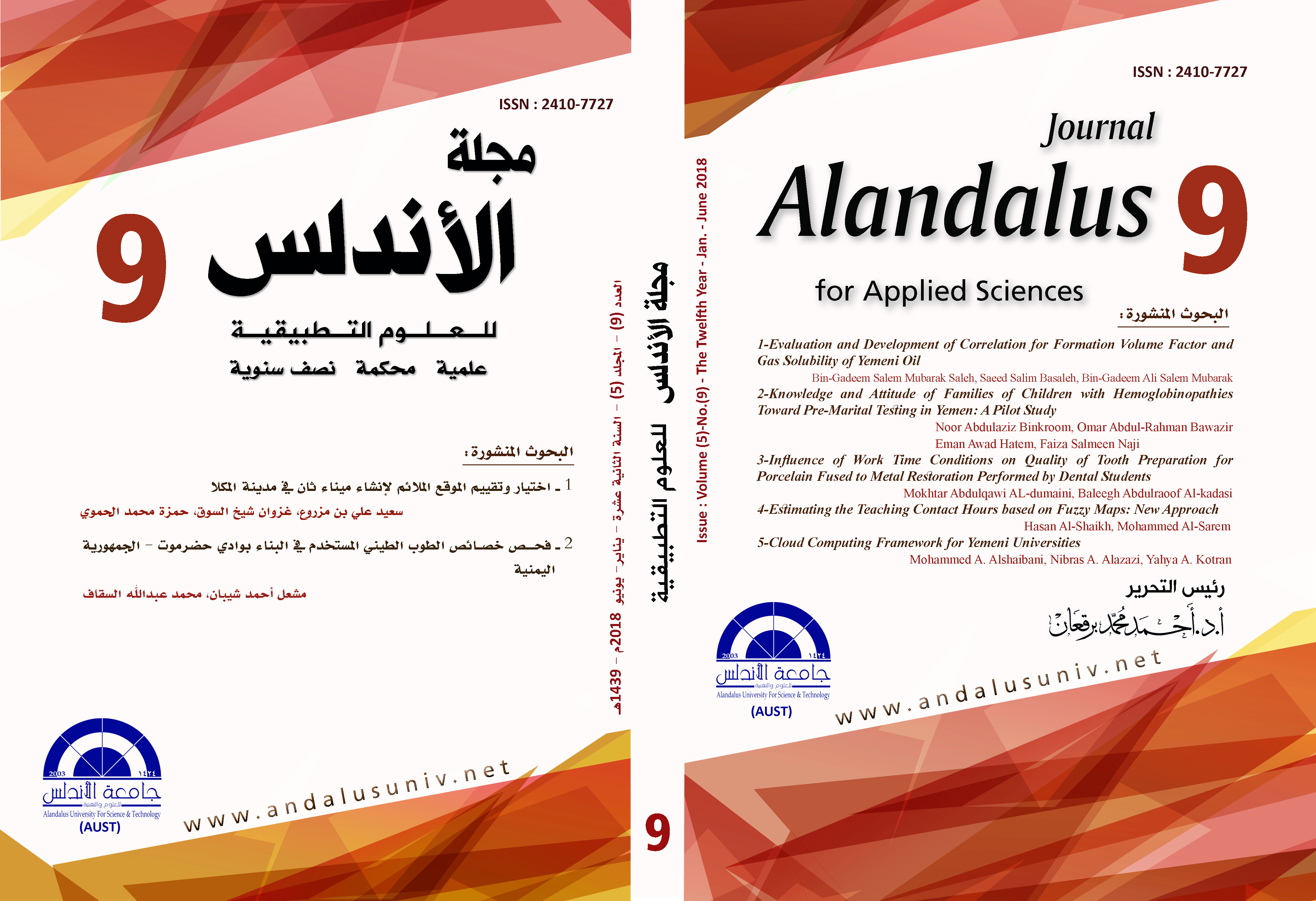Influence of work time conditions on quality of tooth preparation for porcelain fused to metal restoration performed by dental students al-Dumini, Mukhtar Abd al-Qawi al-Kaddasi, Baligh Abd al-Rauf
Main Article Content
Abstract
Statement of problem.
The relation between the work time conditions and the quality of the work carried out by the undergraduate dental students lacks adequate research.
Purpose.
The purpose of this study was to evaluate the impact of work time conditions on quality of clinical tooth preparation for Porcelain fused to metal restorations (PFM) performed by final year dental students at the University of Ibb, Yemen.
Material and Methods.
Total 512 posterior abutments teeth in 216 dental casts samples (diagnostic & working casts) for 108 patients, collected from the Prosthodontics department, were gathered for evaluation (between February and June 2015).
From among these, 128 abutments on which dental students had prepared teeth during routine clinical procedure was called requirement group (RG).
The other 128 abutments on which dental students had prepared teeth for their final practical exams was called examination group (EG).
Each prepared teeth had sound diagnostic casts.
All samples were evaluated for buccolingual (BL) and mesiodistal (MD) dimensions in millimeters by using a digital caliper.
The study used dies to examine occlusal reduction, finishing line position, finishing line continuity, and smoothness of preparations.
The mean values of BL reduction (BLR) and MD reduction (MDR) for all the prepared teeth, RG and EG, were statistically compared with hypothetically calculated ideal range (HCIR) values.
Also, a comparison was held between the two groups.
The data were analyzed by using the, T-test, Paired sample ttest and Wilcoxon test at (P =.05).
Results.
The average of BLR and MDR were 1.988 mm (±.04) and 2.422 mm (±.04).
When BLR and MDR were compared with the ideal value of HCIR, the difference was highly significant.
BLR of RG was 1.961 mm and 2.016 mm for EG.
Comparing theses means with the HCIR, the result showed significance.
MDR of RG was 2.344 mm and 2.500 mm for EG with highly significant difference with the HCIR.
Comparing EG and RG in position, continuity of finish line, smoothness of preparations and MDR, the finding was higher significant, while there was no significant difference in the BLR and occlusal reduction.
Conclusions.
Based on the results of the present study, BLR was less than the ideal value of HCIR, while MDR was higher than it.
Work time conditions have positive impact on tooth preparation quality.
The EG is significantly higher than the RG, and had higher percentage in most preferred study criteria than the RG.
